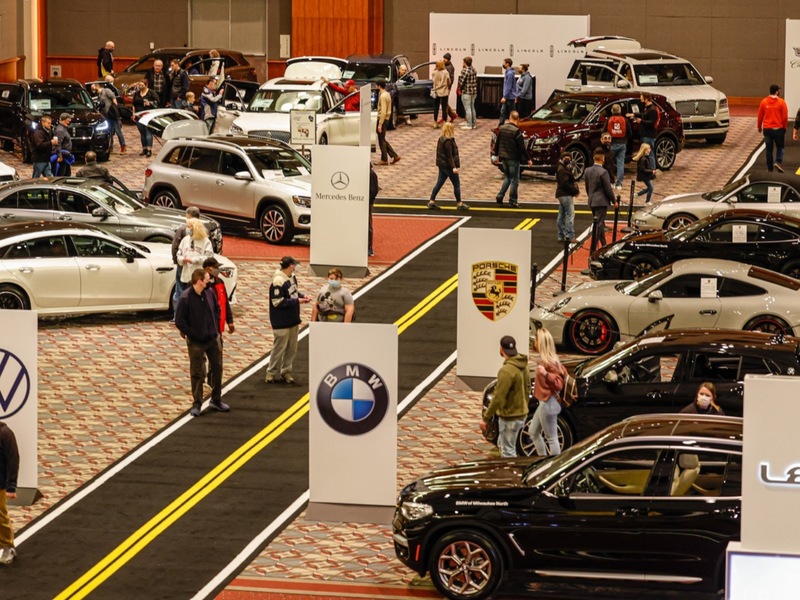This content is presented in partnership with ADAMM.
There are all kinds of things you want to avoid hitting when you’re driving, but probably nothing more than pedestrians. If you hit a pole going 12 mph, your car may suffer some damage. There’s no telling what would happen to a person who happened to be crossing the street.
Unfortunately, more pedestrians are being hit by cars than ever. According to the Centers for Disease Control, a sharp increase in pedestrian fatalities began in 2014. The annual toll surpassed 6,000 for the first time a few years ago. When you add in bicyclist deaths, the yearly numbers exceed 7,000 dead and 130,000 seriously injured.
The carnage has offset an overall reduction in traffic fatalities that are the result of safety improvements such as multiple air bags, traction control, backing cameras, lane departure warning and forward collision avoidance systems with automatic braking. However, several carmakers have introduced pedestrian detection systems in hopes of reversing the trend.
"Some customers know about it when they come in," says Bernard Ewing, sales rep for Don Jacobs Toyota of Milwaukee. "If they don’t, I tell them about it, and they say, ‘Oh, really?’ They’re happy to hear it."
Richard Bruhn, product specialist at Uptown Ford Lincoln of Milwaukee, says that pedestrian detection offers drivers peace of mind. "They’re glad it’s there," he says. "It’s something you really need, because there are more of us on the road these days."
That pretty much sums up a big chunk of the problem. The CDC says that more people driving more miles in more cars leads to more chances for vehicle/pedestrian interactions. The biggest factors contributing to the increase in fatalities, the agency says, include jaywalking, speeding, the aging of the population and "distractions," which primarily means drivers and pedestrians alike paying more attention to their phones than to the road. Also, three out of four pedestrian fatalities occur when it’s dark.
The challenge for automakers is to address all of these factors. In general, pedestrian detection systems use cameras or radar or infrared sensors or cameras – or sometimes combinations of the three – to signal computers that something is in the road ahead. The computers alert drivers with lights, sounds or vibrating steering wheels to take evasive action, but if they don’t, the vehicle will take control of the situation by hitting the brakes.
The systems are similar, but have a few twists. Ford, for example, employs radar and a camera that captures video and compares it to shapes to distinguish people from inanimate objects. A Ford official explains that the goal is to avoid confusion between joggers and fire hydrants, signs or trees. To be able to do that at night – the most dangerous time for pedestrians – changes had to be made in how the headlights illuminated the road ahead, the official said.
Toyota’s Pre-Collision System with Pedestrian Detection also uses a camera, very high-frequency "millimeter-wave radar" and recognition data, plus a "near-infrared-ray" projector for nighttime.
BMW uses infrared to generate a "heat map" of living creatures that Autotrader.com says "looks like night-vision footage in a spy show on TV."
Mercedes-Benz recently upgraded its Night View Assist Plus system by adding infrared sensors that can detect pedestrians 500 feet away, display the image on the dashboard screen and shine spotlights on pedestrians that, Autotrader says, "the driver and pedestrian would notice, but other cars would be immune to."
Lexus’s Advanced Pre-Collision System with Active Pedestrian Detection uses four cameras, plus infrared at night and, Autotrader says, "instigates braking and makes the steering more sensitive for quick, evasive action."
A few years ago, Inverse.com says, Volvo pioneered software that prevented a vehicle from applying the brakes as long as cyclists alongside or ahead of the car were out of harm’s way or designated bike paths. This was important because earlier, "less sophisticated" radar systems couldn’t pick out smaller obstacles or react if they entered the car's path.
Most other automakers offer pedestrian detection, or at least automatic forward braking, as standard or optional equipment on an ever-increasing number of models, which the CDC sites as a possible reason for a slight decrease in pedestrian deaths from 2017 to 2018.
One of the best things about such systems, Bruhn says, is that they require no learning curve to operate. You might have to make sure it’s turned on, but otherwise, "when you take delivery of your vehicle, the sales rep will explain how it works."
Ewing says that he knows first-hand that they do work.
"We had training on it," he says. "They set up dummies in front of the vehicle, and the first time I tried it, I didn’t think the car was going to stop. But it did. I didn’t do anything. It just stopped. And I breathed a sigh of relief."
Of course, he, automakers and the CDC implore you to remain attentive no matter what systems your vehicle has. As the CDC says in its 2017 report, there’s no substitute for an alert driver who takes preventive measures before a vehicle needs to intervene.





